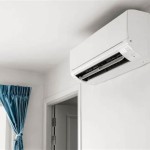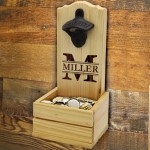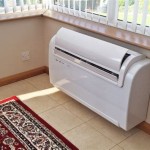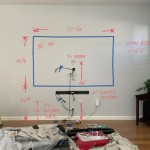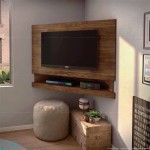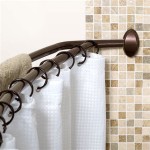Wall Mounted Range Hood Vents: A Comprehensive Guide
Wall mounted range hood vents are a critical component of modern kitchens, serving to improve air quality and enhance the overall cooking experience. Functioning as a powerful exhaust system, these hoods are designed to remove smoke, grease, odors, and heat generated during cooking. This article provides a detailed exploration of wall mounted range hood vents, covering their types, installation, performance considerations, and maintenance.
Understanding the Function and Importance
The primary function of a wall mounted range hood vent is to capture and eliminate airborne contaminants produced during cooking. These contaminants include smoke, grease particles, steam, and unpleasant odors. Without proper ventilation, these substances can accumulate in the kitchen, leading to poor air quality, lingering smells, and potential damage to surfaces. Grease build-up can also create a fire hazard and contribute to the growth of mold and mildew.
The significance of a range hood extends beyond mere convenience. It directly affects the health and well-being of individuals within the household. Prolonged exposure to cooking fumes has been linked to respiratory problems and other health issues. A well-functioning range hood ensures a cleaner and healthier indoor environment by removing these pollutants before they can circulate throughout the home.
Furthermore, these vents protect the kitchen environment. Grease and smoke can settle on cabinets, walls, and other surfaces, leading to unsightly stains and requiring more frequent cleaning. A range hood intercepts these particles, preventing them from accumulating and preserving the aesthetic appeal of the kitchen.
Types of Wall Mounted Range Hood Vents
Wall mounted range hood vents are available in a variety of styles and configurations to suit different kitchen designs and cooking needs. Understanding the different types is crucial for selecting the most appropriate option.
Ducted vs. Ductless: This is a fundamental distinction. Ducted range hoods vent air to the outside through a duct system. They are generally more effective at removing pollutants because they completely expel them from the kitchen. Ductless range hoods, on the other hand, recirculate air through filters, typically charcoal filters, which absorb odors and some particulate matter. While easier to install as they don't require ductwork, they are less effective at removing heat, moisture, and all pollutants compared to ducted models. Ductless models are typically chosen when ducting to the outside is either impossible or prohibitively expensive.
Style and Design Variations: Beyond the ducted/ductless distinction, several aesthetic styles exist. These include:
- Chimney Style: Characterized by a tall, vertical chimney that extends from the hood to the ceiling. They are typically made of stainless steel and offer a sleek, modern look.
- Under-Cabinet: Designed to be installed beneath existing kitchen cabinets. They are a more compact and budget-friendly option.
- Euro-Style: Often feature curved glass canopies and minimalist designs, adding a touch of elegance to the kitchen.
- Professional Style: These robust hoods offer powerful ventilation and are often used in high-end kitchens or by avid cooks. They feature larger capture areas and more powerful motors.
Material Choices: Stainless steel is a popular material for range hoods due to its durability, resistance to corrosion, and ease of cleaning. Other materials, such as copper and powder-coated metals, are also available, offering different aesthetic options.
The selection of a specific type depends heavily on the kitchen’s layout, ventilation requirements, and desired aesthetic. Careful consideration of these factors is essential for making an informed decision.
Factors Affecting Performance
The effectiveness of a wall mounted range hood vent depends on several key factors that influence its ability to capture and remove airborne contaminants. These factors must be considered when selecting and installing a range hood to ensure optimal performance.
CFM (Cubic Feet per Minute): CFM ratings measure the volume of air the range hood can move per minute. A higher CFM rating indicates greater ventilation power. The appropriate CFM rating depends on the size of the cooking area, the type of range, and the frequency of cooking. A general guideline is to have at least 100 CFM for every linear foot of cooktop width. High-output gas ranges require a higher CFM than electric ranges.
Capture Area: The capture area refers to the size and shape of the hood's opening that draws in air. A larger capture area is more effective at containing smoke and grease, especially when cooking on multiple burners simultaneously. The hood should extend beyond the front burners of the cooktop to maximize capture efficiency.
Baffle Filters vs. Mesh Filters: Range hoods use filters to trap grease and other particulate matter. Baffle filters are typically made of stainless steel and are designed to channel grease into a collection trough for easy removal. They are more efficient and durable than mesh filters, which require more frequent cleaning and replacement. Baffle filters are often found in higher-end models due to their superior performance and longevity.
Ducting and Venting: For ducted range hoods, the ductwork plays a crucial role in ventilation efficiency. The duct should be as short and straight as possible, with minimal bends and elbows, to reduce airflow resistance. The diameter of the duct should match the outlet of the range hood to ensure optimal performance. Using smaller duct sizes can significantly reduce the hood's CFM rating.
Noise Level: Range hoods can produce varying levels of noise, especially at higher speeds. Noise levels are measured in sones. It is advisable to consider the sone rating when selecting a range hood, especially for open-concept kitchens, where excessive noise can be disruptive. Many modern range hoods offer multiple speed settings, allowing users to adjust the ventilation power and noise level as needed.
Installation Considerations
Proper installation is crucial for ensuring the safety and effectiveness of a wall mounted range hood vent. Incorrect installation can lead to poor performance, noise issues, and even safety hazards. While some homeowners may attempt DIY installation, professional installation is generally recommended, particularly for ducted models that require modifications to the kitchen's structure.
Height Above Cooktop: The recommended height above the cooktop depends on the type of range and the manufacturer's specifications. Generally, gas ranges require a higher clearance than electric ranges due to the increased heat output. A typical range is between 24 and 36 inches above the cooking surface. Maintaining the correct height ensures optimal capture and prevents damage to the hood from excessive heat.
Electrical Requirements: Range hoods typically require a dedicated electrical circuit. It's crucial to ensure the electrical system is properly grounded and meets the voltage and amperage requirements specified by the manufacturer. Consulting with a qualified electrician is essential to ensure safe and compliant electrical connections.
Ductwork Installation (for Ducted Models): The ductwork should be installed according to local building codes and regulations. Using rigid metal ductwork is preferable to flexible ductwork, as it provides better airflow and reduces the risk of grease buildup. The duct should be properly sealed to prevent air leaks and ensure efficient ventilation. The termination point of the duct should be located away from windows, doors, and other air intakes to prevent the re-entry of exhaust fumes into the home.
Leveling and Securing: The range hood must be properly leveled and securely mounted to the wall to prevent vibration and ensure stability. Using appropriate mounting hardware, such as anchors and screws, is essential to support the weight of the hood. Following the manufacturer's instructions carefully during installation is crucial for achieving a secure and properly functioning range hood.
Maintenance and Cleaning
Regular maintenance and cleaning are essential for maintaining the performance and longevity of a wall mounted range hood vent. Neglecting maintenance can lead to reduced airflow, increased noise, and the buildup of grease, creating a fire hazard.
Filter Cleaning: Filters should be cleaned regularly, depending on the frequency of cooking. Mesh filters can be washed in the dishwasher or by hand with warm soapy water. Baffle filters are also dishwasher-safe, but it's recommended to hand-wash them periodically to remove stubborn grease buildup. Replacing charcoal filters in ductless models is necessary every few months, as they lose their effectiveness over time.
Exterior Cleaning: The exterior of the range hood should be cleaned regularly with a non-abrasive cleaner to remove grease and fingerprints. Stainless steel cleaners are specifically designed for cleaning stainless steel surfaces without scratching or damaging the finish. Wiping down the exterior after each use can help prevent the buildup of dirt and grime.
Ductwork Inspection: For ducted range hoods, the ductwork should be inspected periodically for grease buildup and obstructions. If significant grease buildup is detected, the ductwork should be cleaned by a professional. Regular inspections can help prevent fire hazards and ensure optimal ventilation performance.
Motor Maintenance: While most modern range hood motors are designed to be maintenance-free, it's advisable to check for any unusual noises or vibrations. If problems are detected, contacting a qualified technician is recommended to diagnose and repair the issue. Proper maintenance can extend the life of the motor and ensure reliable operation.

Unbranded 30 In Convertible Dual Ventilation Mode Wall Mounted Range Hood Silver With Led Light And Push Button Control 1

36 In 450 Cfm Convertible Dual Ventilation Mode Wall Mounted Range Hood Silver W Led Light And Push Button Control

Rhm Custom Scalloped Stainless Steel Range Hood Wall Mounted Sh41

Zline 36 Convertible Vent Wall Mount Range Hood Kb

Cosmo 30 Inch Ducted 380 Cfm Stainless Steel Wall Mounted Range Hood Cos 63175

Zline Kb Wall Mount Range Hood In Stainless Steel 30 Inch

Proline 30 Stainless Steel Wall Range Hood 600 Cfm Plfw 520

Vent A Hood Prh18m36ss Pro Style Wall Mount Range With 24 Depth Optional Single Or Dual 600 Cfm Blowers Stainless Steel Baffle Filters And 2

Rhm Custom Straight Stainless Steel Range Hoods Under Cabinet Sh11 C4tb

Bespoke S Wall Mount Hood 30 In White Samsung Us

